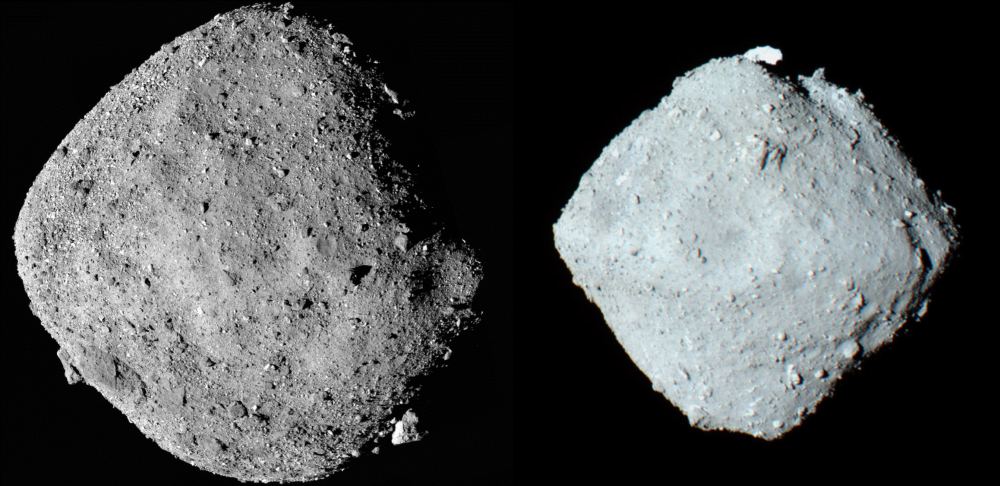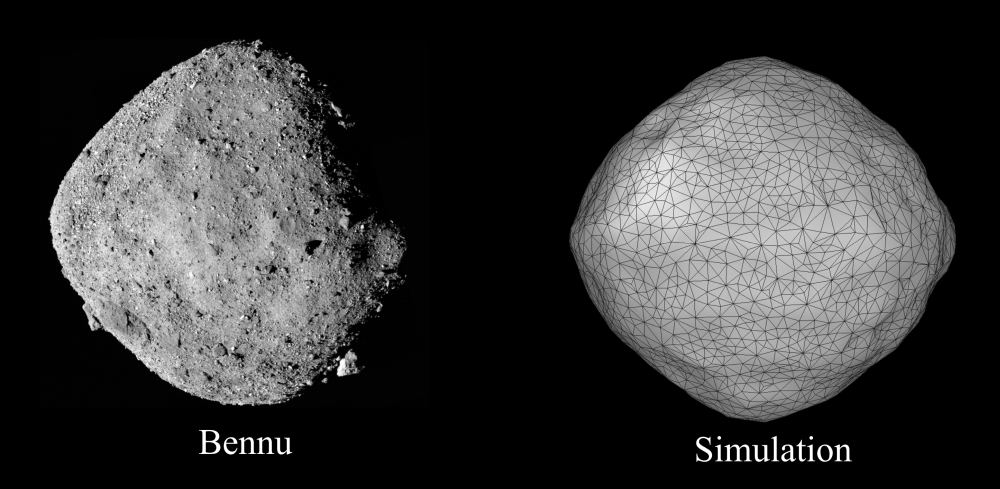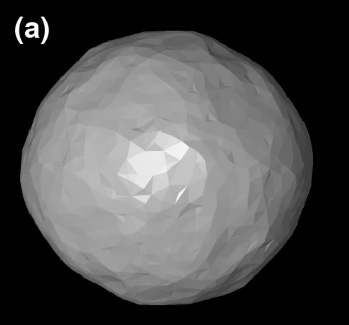Scientists are fortunate enough to have detailed, close-up views of the near-Earth asteroids Bennu and Ryugu. Both asteroids have a diamond shape, for some reason. Why? Up until now, it’s been a puzzle.
Now a team of scientists has tackled the question and may have come up with the answer.
Asteroids are an ongoing target of study for scientists. They’re remnants from the primordial Solar System, material that wasn’t swept up in planet formation. Most of them are way out in the asteroid belt, where they’re difficult to study.
But some of them have escaped the belt and come close to Earth. These near-Earth asteroids give scientists their best chance to study them. Spacecraft have been sent to both Ryugu and Bennu to collect samples and return them to Earth. While there, both the Japanese spacecraft Hayabusa 2, which visited Ryugu, and NASA’s OSIRIS-REx, which visited Bennu, studied their asteroid targets intensely, including gathering detailed images.
Both are rubble-pile asteroids, which means that they’re made up of chunks of smaller material bound together by gravity, and both are diamond-shaped. Both also rotate rapidly.
 The near-Earth asteroids Bennu (l) and Ryugu (r). Both are rubble-pile asteroids and both are diamond-shaped. Image Credit Left: NASA/Goddard/University of Arizona – Public Domain. Image Credit Right: By ISAS/JAXA, CC BY 4.0
The near-Earth asteroids Bennu (l) and Ryugu (r). Both are rubble-pile asteroids and both are diamond-shaped. Image Credit Left: NASA/Goddard/University of Arizona – Public Domain. Image Credit Right: By ISAS/JAXA, CC BY 4.0A group of researchers from the Okinawa Institute of Science and Technology (OIST) and Rutgers University have published a paper explaining the asteroids’ diamond shape. The paper is titled “Bennu and Ryugu: diamonds in the sky.” It’s published in the journal Granular Matter. The lead author is Dr. Tapan Sabuwala from OIST.
The fact that they’re just loosely held-together, smaller pieces of material means that they’re like granular matter, rather than larger, monolithic pieces of rock. So to study them and their diamond shape, the team of scientists made use of granular physics modelling. In this case, a model of how sand grains flow helped explain the diamond shape.
This isn’t the first attempt at using models to understand the asteroids’ shapes. Those models relied on rotation to explain the shape, but the models didn’t hold up to testing.
“Previous models have attributed these diamond shapes to the forces caused by the rotation, which resulted in material being driven from the poles to the equator,” said paper lead author Dr. Tapan Sabuwala. “But when the asteroids were simulated using these models, the shape was flattened or asymmetric rather than diamond, so we knew something wasn’t right,” explained Dr. Sabuwala in a press release.
The press release accompanying the study used sand flowing through a funnel as an example. As sand is poured in, it forms a conical shape. Of course, there’s much more going on at an asteroid than there is on a simple pile of sand. The gravitational forces are much different. “We had to factor this into our model, alongside the fact that the asteroid’s rotation also plays a significant role,” Dr, Sabuwala said.
 On the left is an image of asteroid 101955 Bennu. On the right is a modelled simulation from the study. The model clearly matches the diamond shape of the asteroid. Image Credit: Sabuwala et al 2021.
On the left is an image of asteroid 101955 Bennu. On the right is a modelled simulation from the study. The model clearly matches the diamond shape of the asteroid. Image Credit: Sabuwala et al 2021.According to the paper, centrifugal force played a large role in Bennu’s and Ryugu’s shape. It’s weaker near the asteroids’ poles, so more material accumulates there. That gives the asteroids their distinct appearance. “We show that this accumulation results in increased elevations at the poles, while centrifugal migration increases elevations at the equator. Without this accumulation, poles lack the elevated poles that are evident on Ryugu and Bennu,” the authors write in their paper.
This work deviates from previous models in another important way. It shows that the asteroids didn’t form as a different shape then gradually become diamond-shaped. Instead, the diamond shape formed as the asteroid formed and as material accumulated. The asteroids’ shape only changed minimally over time.
“The model relies on the principle of a critical angle of repose assumed by falling grains deposited on spinning, rubble-pile asteroids. Since the model is driven by deposition, our results suggest first that Bennu and Ryugu acquired their characteristic shapes at early times and second that subsequent reshaping by other effects … may be minimal,” they write in the paper’s summary.
Next, the researchers would like to look at other rubble-pile asteroids that rotate more slowly. Those types of asteroids should form a more spheroidal shape since the centrifugal force is weaker. When they reduced the rotation rate in their modelling, that’s exactly what resulted.
 When the researchers reduced the rotation rate in the models, it reduced the centrifugal force, resulting in a more spheroidal shape. Image Credit: Sabuwala et al 2021.
When the researchers reduced the rotation rate in the models, it reduced the centrifugal force, resulting in a more spheroidal shape. Image Credit: Sabuwala et al 2021.“We have used simple concepts of how grains flow to explain how these asteroids assumed their curious shapes,” said co-author Professor Chakraborty of OIST. “That simple ideas can illuminate complex problems is, to us, perhaps the most delightful aspect of this work.”

